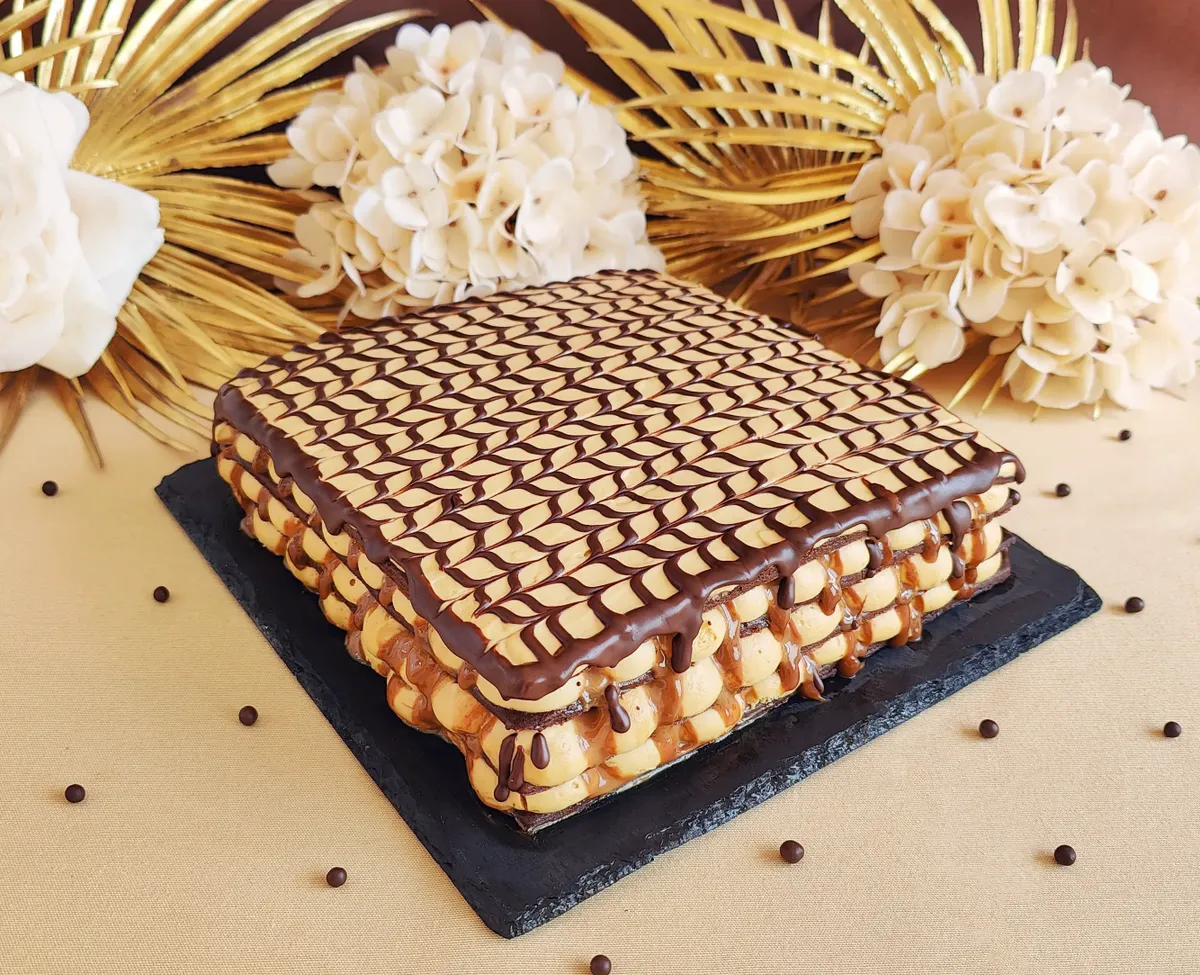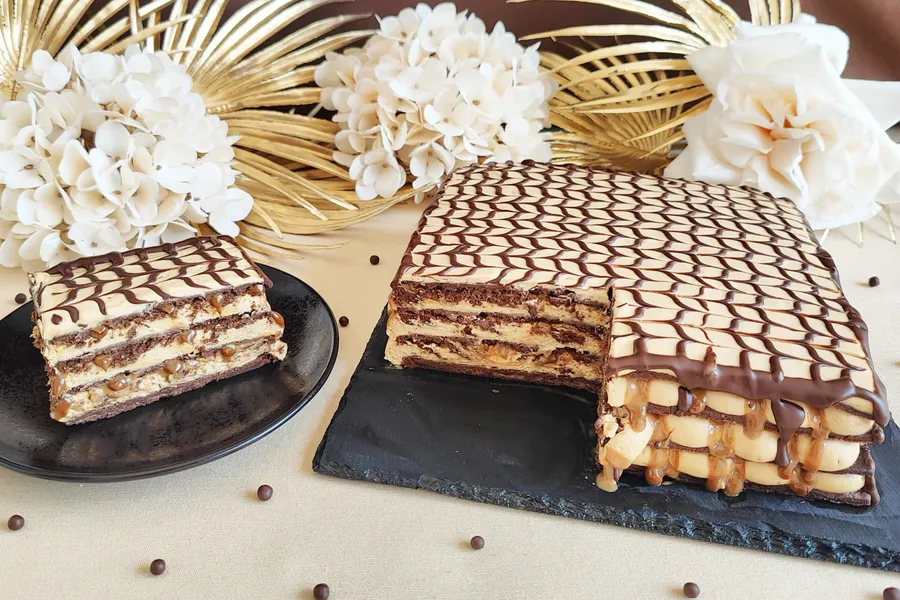
The history of Chocotorta cake
The chocotorta is one of the most iconic desserts in contemporary Argentine patisserie. Its origin does not stem from a centuries-old tradition or a classic recipe book, but rather from a creative advertising campaign. It was invented in 1982 by Marité Mabragaña, a copywriter at the Buenos Aires-based agency Ricardo De Luca Publicidad. At the time, Marité was looking for a way to combine products from two of the agency’s clients: Chocolinas (by Bagley) and Mendicrim cream cheese (by SanCor).
The idea came about casually, as Mabragaña explained in several interviews, including one with the newspaper La Nación in 2011. At home, she used to make a cake with sponge fingers, coffee and cream, but she decided to experiment with the two products she was promoting. By combining Chocolinas biscuits, moistened with coffee or milk with cocoa, and a mixture of cream cheese and dulce de leche, she arrived at a simple, no-bake, and absolutely delicious recipe.
The first time this dessert was widely shared was through a print campaign in women’s and cooking magazines of the time. The recipe appeared at the bottom of the ads, under the name torta de chocolinas. The name chocotorta was soon adopted by the public and became the standard. Unlike other desserts, its popularity spread rapidly because it matched what many families were looking for: speed, flavour, and convenience.
From a technical perspective, chocotorta is a cold-assembled dessert, similar to icebox or no-bake cakes. In 1980s Argentina, using cream cheese in desserts was uncommon, but its combination with dulce de leche proved so successful that it sparked a new trend. Its layered structure also brought it closer to European classics like tiramisu, though it used entirely local ingredients.
Over time, chocotorta became a cultural symbol. In 2020, it was named the best dessert in the world by the food site TasteAtlas, which further boosted its international recognition. However, its greatest strength remains in the domestic setting: birthdays, afternoon teas, and family gatherings. It is often one of the first desserts children in Argentina learn to make, making it part of the country’s emotional heritage.
Today, chocotorta has gone beyond its original form. There are versions in cups, jars, frozen, vegan, and even gourmet. Yet they all preserve the essence of that recipe created by an Argentine copywriter in 1982: layers of chocolate biscuits, cream cheese, dulce de leche, and lots of love. Its story is a testament to how a creative idea, using simple and accessible ingredients, can become a timeless classic in patisserie.

 albertoimizcoz
albertoimizcoz

